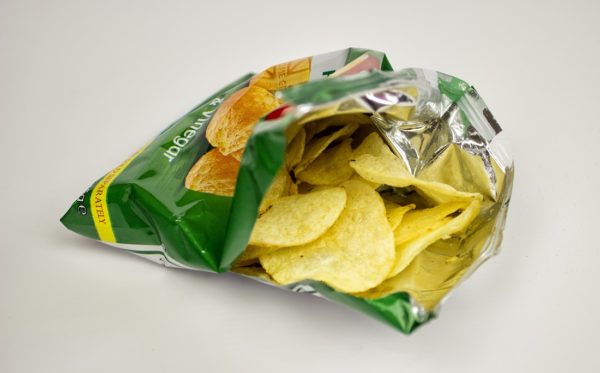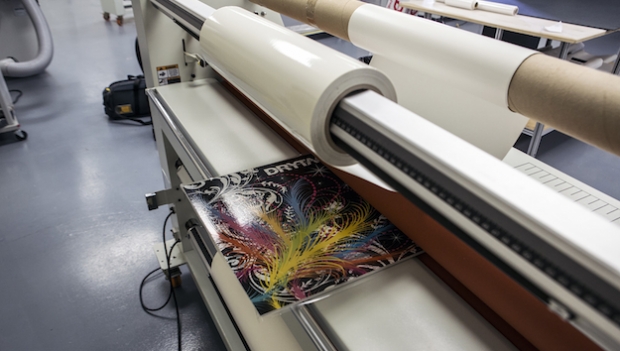
Today’s manufacturers are challenged to package their products both cheaply and effectively. This is why so many food products now come in hard-to-recycle composite packages. A composite material contains layers of plastics, paper, and metals joined together with resins or wax. Due to the properties of each material, the package is thinner, more cost effective, and more durable than a single-material package.
However, composite materials are virtually impossible to recycle profitably, because the paper, plastic, and other materials cannot be separated into pulpl and plastic resin without substantial contaimination — the materials pollute one another, making recovery expensive, so costly that most composites end up in landfills where they stay for centuries.
How Are Composite Packages Used?
Composite packages are popular for food and beverages, industrial goods, healthcare, and more. An example of of composite packaging is a chip bag.
A typical chip bag consists of multiple layers of polymers, including biaxially oriented polypropylene (BOPP), low-density polyethylene (LDPE), and Surlyn, according to Polymer Solutions Incorporated. “Each layer performs a specific function,” the company explained. For example, different materials keep moisture away from chips, keep the chip grease inside the bag, and make the bag “strong and flexible but not unbreakable” so it transports well, and the consumer can easily access the contents.
Companies have invested and will continue to invest a lot of time and money into composites because they work so well.
This type of packaging is unlikely to go away anytime soon.
Why Is it Difficult to Recycle Composite Packages?
Because each composite package consists of a variety of materials, it can’t be immediately recycled when it reaches a recycling facility. Mixing materials will contaminate all of the materials in that recycling batch, causing useful material to be wasted.
The materials in a composite package must first be separated so that they can be recycled in the appropriate facility. Because the current U.S. recycling infrastructure is underequipped to handle composite packaging, this type of package is rarely accepted in curbside recycling, and often ends up in the trash.
Composite packages require innovative solutions to separate and reclaim the materials for recycling.
Exploring Ways to Recycle Composite Packaging
Since there are so many different ways to make a composite package, there will not be one way to recycle all types of composite packages. Research will lead to many different solutions. The key is finding a sustainable solution that doesn’t harm the environment.
Saperatec, a company in Germany, has developed a solution for recycling composites. Their process will separate the layers of paper, plastic, and metal in a composite. Once the layers are separated, each material can be sent to the proper facility for recycling. The process separates the materials through a chemical reaction that breaks down the glues and resins used to keep the layers together.
Saperatec’s chemical process has yet to be tested in a large facility, but their process is heading in the right direction for composite recycling.
You may already be familiar with TerraCycle beause of their mail-in recycling programs. TerraCycle provides a recycling program for snack bags, a type of composite packaging that normally ends up in the trash. Their process melts the layers of plastics together to create a different composite plastic material. The new material can be molded into different consumer products, giving the composite a longer life cycle. This process works for plastic-only composites but does solve the problem of paper-plastic-metal composites.
To recycle snack bags with TerraCycle, individuals and organizations simply set up an account, collect clean, empty snack bags, and ship a full box back to TerraCycle. TerraCycle also offers recycling programs for other hard-to-recycle packaging.
Close the Recycling Loop
Composite packaging is very appealing for manufactures because of its low cost and durability. But when this type of packaging was developed, no thought was put into how it would be recycled once it was used. And so, most of the composite packaging used ends up in a landfill after its first use.
Thanks to companies like Saperatec and TerraCycle, some of these composite packages can be reclaimed so that the materials can be used in new products. And for manufacturers that want to improve the sustainability of their packaging, guidance is available from the Sustainable Packaging Coalition.
As consumers, you can hold companies accountable to use packaging that can be easily recycled. If you consume products whose packaging cannot be recycled by your local recycler, consider shopping for products that are more sustainably packaged. Or, look for alternative recycling programs such as those offered by TerraCycle. And when you’re shopping, look look for products and packaging made from recycled material.
Post category







